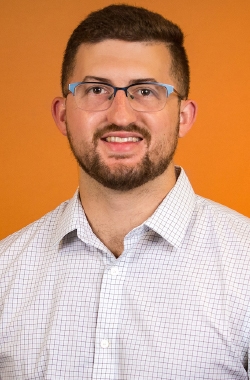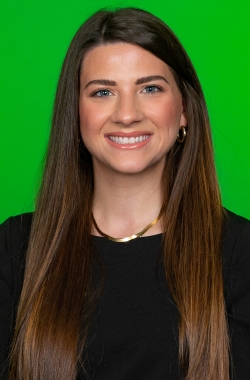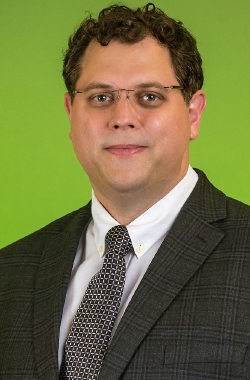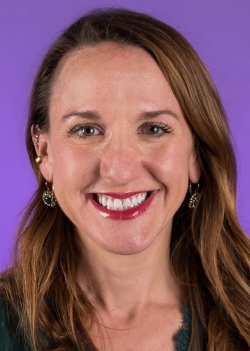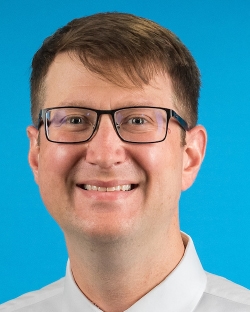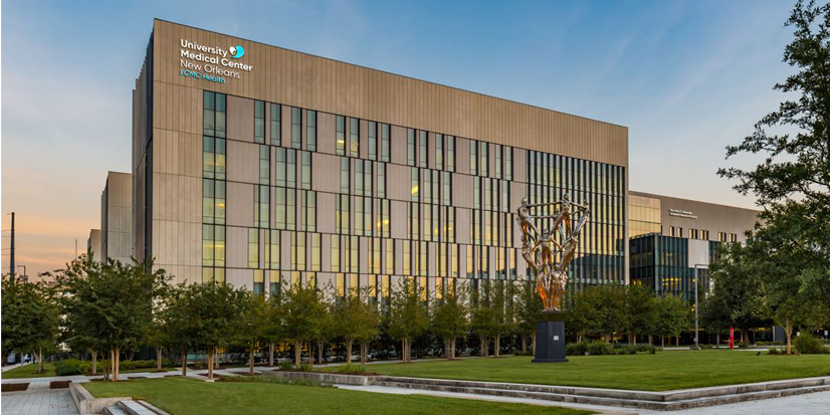Burn Center
The only verified burn center in the Gulf South
We don’t like to toot our own horn, but the Burn Center at University Medical Center New Orleans is the only American Burn Association (ABA)-verified burn center between Galveston and Tampa—and one of approximately 75 verified burn centers in the country. That means, here in NOLA, you’re in great hands.
Every year, more than 450,000 people are treated for burn injuries in the U.S. Every day, 9 people die from house fire injuries, one of the most common types of burn injuries. Since opening our doors in 2018, the mortality rate for burn injuries in the city has fallen by 50%.
Being a verified burn center means we meet the ABA’s rigorous standards for the highest level of care, focusing not only on acute critical care for burn injuries but also on reconstruction, scar management, and rehabilitation. Our 27,000-square-foot facility is helicopter-accessible and outfitted with the most advanced equipment and innovative technology to handle the most complex burn cases.
While providing burn injury care is our number one concern, we are also leaders in advanced research, education, and outreach. We are dedicated to finding and using the latest innovative solutions for burn injuries, critical care, wound healing, and scar formation. Our research team is actively engaged in the most groundbreaking studies—including numerous clinical trials made available to our patients here in NOLA.
When the unimaginable happens, the Burn Center at University Medical Center New Orleans is here for you every step of the way.
Services and treatments
As a verified burn center, we offer the highest standard of care and tailor treatment to meet each patient’s specific needs. We specialize in both surgical and nonsurgical burn injury treatment and provide a wide range of rehab services to help you heal physically, emotionally, and spiritually. Some of our services include:
- First, all burned, dead tissue from an acute burn wound is removed until healthy, bleeding tissue is revealed. This is called debridement.
- Then, the wound bed is prepared for grafting. Healthy skin is harvested from another part of the body and placed over the burn wound.
A hypertrophic scar is an abnormal response to wound healing. It appears on the skin as a thick raised scar. While they aren’t dangerous, they can cause pain or itching.
Laser treatment for hypertrophic scarring uses noninvasive laser technology to target blood vessels in the scar. This prevents the scar from growing and can lighten the redness and reduce pain, itching, and hardness.
Operative reconstruction refers to a number of surgical procedures used to improve the appearance and function of burn scars. The technique typically involves skin grafting (replacing damaged skin tissue with healthy skin tissue), scar contracture release (removing scarred tissue that restricts joint movement), and tissue flap surgery (transferring a section of skin with its blood supply to the wound area).
Exact procedures vary based on patient needs.
Burn rehab starts during the acute treatment phase and continues for as long as needed. The goal is to help patients heal and return to the highest level of function and independence possible. Our comprehensive, multidisciplinary approach includes:
- Complex wound care
- Pain management
- Physical therapy for positioning, splinting, and exercise
- Occupational therapy for help with activities of daily living (ADLs)
- Skin grafting
- Cosmetic reconstruction
- Nutrition counseling
We believe recovery from burn injuries also includes treating the scars on the inside, like fear, anxiety, and post-traumatic stress disorder (PTSD). To address these and other mental and behavioral health concerns, we provide education and counseling to manage the emotional side of healing.
We also offer a biweekly support group for burn survivors and their loved ones. Details can be found on the Burn Survivor Support Group page.
Recovery from a burn injury is more than physical—it’s emotional and social, too. You don’t have to navigate that path alone.
The UMC Burn Unit is committed to supporting survivors well beyond the hospital stay. In partnership with the Phoenix Society, we offer SOAR – Survivors Offering Assistance in Recovery. This program connects burn survivors with trained Coordinators and Peer Supporters who have lived experience and understand the unique challenges of healing. Through SOAR, we provide:
- Quarterly community events to build connection and resilience
- A twice-monthly support group for ongoing emotional support
- One-on-one peer connections with trained survivors who can offer encouragement, insight, and hope
- A regularly published newsletter, Rise and Recover, delivered every 6–8 weeks with helpful resources, upcoming events, and inspiring survivor stories
Whether you're just beginning your recovery or years along your journey, we’re here to support your next steps—on your terms.
Meet our providers
They say it takes a village. We say it takes a team of highly trained experts who are just as passionate as they are skilled in burn injury care.
Led by expert surgeons with decades of experience—each certified by the American Board of Surgery and the Surgical Critical Care Board—the Burn Center team is here for you every step of the way, from critical care to surgical reconstruction to rehab and recovery.
Make an appointment
When you need burn care, we're here for you.
For emergency transfers or questions, please call 504-702-5262.
For clinic appointments, please call 504.702.2876 or 504.702.4543. You may also email us at umcburncenter@lcmchealth.org.
Next day appointments are often available.

